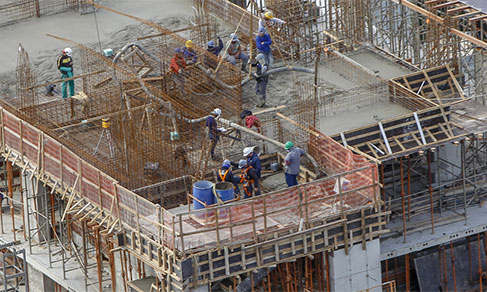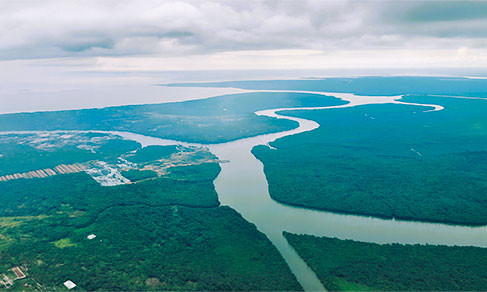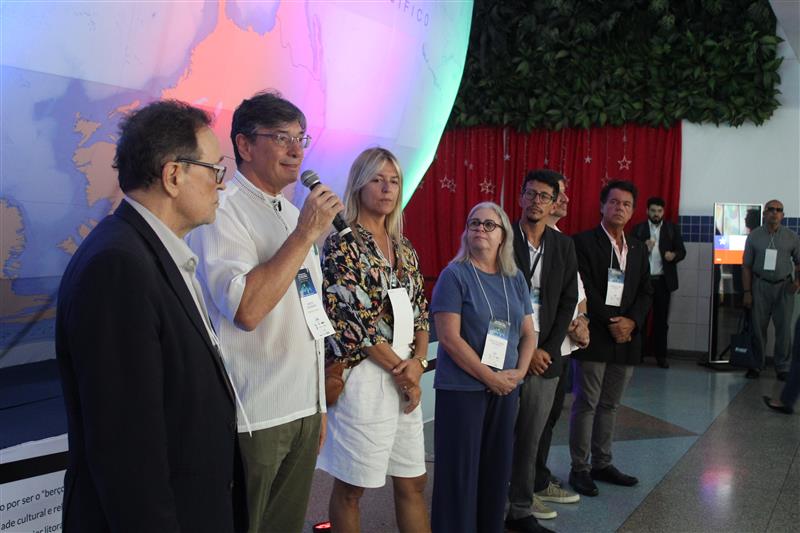Elderly sport willingness to work and contribute to Census of Agriculture
January 29, 2018 09h00 AM | Last Updated: June 05, 2018 03h48 PM
Those who think that the elderly are meant to get out of the labor market and stay home are wrong. In the 2017 Census of Agriculture, which will be on the field until February, the elderly take part both as rural producers and census takers. Of the 20,803 enumerators working in the Census, 222 are aged 60 and over.
At 75, Marlene da Silva Oliveira is at her fourth enumeration activity for the IBGE, in Santo Antônio do Monte (MG). Her relationship with the Institute began in the 2000 Population Census, after her retirement, as a way of maintaining the hectic routine she had at work and fighting against depression. Now, she even thinks of participating in the 2020 Population Census. "My goal is to get to know places and see the reality of people", she says.
The census taker says that the greatest difficulty she had working in the censuses was to adapt to the change from paper questionnaire to the Mobile Collection Device (DMC) in the 2006 Census of Agriculture. "I said I would give up, but I was encouraged by my wonderful supervisors. Would you believe I learned how to use it?" However slowly, Marlene persevered and finished the first enumeration area. She is working now on the second one and has covered more than 100 agricultural establishments now. Nowadays, Santo Antônio do Monte has already 86.3% of its establishments collected. In the state of Minas Gerais as a whole, the percentage is of 92.1%.
Enumerators by age group and state
| States | 18-24 YEARS OLD | 25-39 YEARS OLD | 40-59 YEARS OLD | 60 YEARS OLD or + |
|---|---|---|---|---|
| AC | 83 | 78 | 7 | 0 |
| AL | 176 | 160 | 9 | 1 |
| AM | 260 | 280 | 47 | 5 |
| AP | 13 | 21 | 3 | 0 |
| BA | 1112 | 1328 | 235 | 8 |
| CE | 458 | 517 | 99 | 4 |
| FD | 14 | 9 | 3 | 0 |
| ES | 143 | 179 | 63 | 2 |
| GO | 215 | 374 | 153 | 7 |
| MA | 424 | 471 | 70 | 3 |
| MG | 777 | 1090 | 375 | 37 |
| MS | 82 | 183 | 97 | 7 |
| MT | 150 | 337 | 149 | 7 |
| PA | 466 | 544 | 115 | 7 |
| PB | 261 | 268 | 28 | 0 |
| PE | 402 | 434 | 54 | 1 |
| PI | 464 | 477 | 42 | 1 |
| PR | 448 | 743 | 298 | 25 |
| RJ | 85 | 127 | 35 | 2 |
| RN | 130 | 157 | 16 | 1 |
| RO | 157 | 158 | 38 | 0 |
| RR | 35 | 29 | 9 | 0 |
| RS | 558 | 855 | 398 | 53 |
| SC | 212 | 415 | 190 | 20 |
| SE | 148 | 134 | 13 | 0 |
| SP | 335 | 449 | 272 | 29 |
| TO | 135 | 169 | 34 | 2 |
| BRAZIL | 7743 | 9986 | 2852 | 222 |
Aging of producers and rural exodus
The age of Brazilian farmers is one piece of information collected by the 2017 Census of Agriculture. Using updated data, it will be possible to make relevant disaggregation of social nature and identify certain trends, among which the aging of producers and the rural exodus.
"In many properties, there is youth participation in the production process, but not enough to guarantee it", claims the state coordinator of the Methodology of Rural Extension of Emater (Technical Assistance and Rural Extension Enterprise of the State of Minas Gerais), Helena Silva. She points out two common situations in family farming: heir succession or properties without significant activities.
Josefa Cassiana dos Santos received the IBGE in her house's backyard, with the hoe at hand. Her documents present the age of 83, but the lady guarantees she has turned 101 in 2017. Mother of 16 children, she remembers the difficulties going from farm to farm to provide for her family, in the north of Minas. The farmer acquired with a great effort a piece of land in the "Estrada do Amargoso" near the municipality of Verdelândia, where she cultivates green vegetables, beans, corn and cassava, as raises cattle as well.
"Dona" Josefa is happy to have some of her children by her side - others also live nearby, working in rural activities, others moved to the city. "Most of them have no degree, they only how to cultivate the land", explains Maria José, 40 years old, one of Josefa’s 58 grandchildren. Differently from her relatives, she works as a social assistant in the same locality.

At 101 years old, Dona Josefa plants green vegetables, beans, corn and cassava in her land in Verdelândia (MG)
Antônio Mariano dos Santos is 81 years old and started working when he was 12. He was born and raised in the Santa Luzia farm, a small property 32 kilometers away from Passos, in the south of Minas. He shares his duties with his son Celso, 55 years old. The two of them alone account for the milk production and corn farming, sharing the profits; the other three daughters of the producer live in an urban center. Despite liking Celso's company, the agriculturist wonders if his son would have a better quality of life in the city and observes that youngsters have been choosing to change businesses.
Rural retirement
In both cases, the old producers are active – despite their limitations - and have no intention of leaving the farming activities. Both Josefa and Antônio are covered by the National Institute of Social Security (INSS) with a special insurance, because they fit the category of family farmers, which entitles them to age retirement after 60 years old (for men) and 55 (for women), given they have the minimum length of rural work required.
Emater coordinator, Helena Silva, emphasizes the relevance of debating rural succession, because "even though the exodus rate has been reducing, the rural-urban migration is still an important component of the Brazilian demographic dynamics", which causes an impact on the agricultural production, mainly the family ones.
Experience to spare
The accumulation of years brings along the privilege of accumulating stories, experiences and knowledge - which have a great weight in conducting a Census. " We know all the basic aspects of a Census by heart, this systemic view facilitates a lot decision making and problem-solving based on previous cases", explains Jonas Pio da Veiga, 68 years old, 44 of which were dedicated to the IBGE.
Nowadays, the servant works as coordinator of the Census of Agriculture in the area of Governador Valadares, but his curriculum goes far, with his first experience dating back to the 1975 Census of Agriculture, in the south of Minas. From that time up to today, Jonas has worked in Belo Horizonte and even in Africa, where he gave support to the implantation of the Census in São Tomé and Príncipe.
He points out the year 2,000 as a great milestone due to the introduction of computers in the IBGE agencies. "Our big piles of paper disappeared because of that. I myself received once 20 tons of questionnaires in my sector", he exemplifies.
When asked about what has changed in the Census of Agriculture, he states that some time ago the greatest difficulty was moving from place to place, but another difficulty still remains: the fear people have to offer information: "people worry too much about fiscal control thinking there will be a direct relation with taxes", he concludes, highlighting that information given to the IBGE is confidential an strictly used for statistical purposes.




















